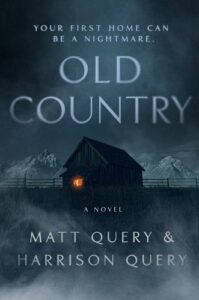The frontier of the American West has dominated the cultural consciousness on this continent for centuries, dating back to the earliest era of colonial settlement during which the threshold between the familiar and the wild was drawn along what would now be considered the east coast. As colonial expansion has moved ever westward, exploring and transforming these territories has become emblematic of something indelible in the American experience—confronting the unknown, the dangerous, and the terrifying.
The earliest figures to participate in this effort did so during a time of ubiquitous religious observance. Their most fundamental beliefs were challenged by the unpredictability and desperation encountered by those attempting to make a life in a new and wildly dangerous environment. The mania that gripped Salem in the late 17th Century would mark the beginning of something of a tradition. A collision brewed between the deeply held beliefs and fears born from the pious and superstitious soil of the old world and the constant, ambient fear inherent to living in the new. The iconic literature and theater that has told this story, including most famously Arthur Miller’s THE CRUCIBLE, explores that anxiety and terror. Newer additions to this specific ‘canon’ would include Robert Eggers’ THE WITCH, which similarly submerges the viewer into this strange stew where characters must navigate the settling of an untamed environment while facing their darkest, most unspoken fears.
The stories of Lewis and Clark, Fremont and Kit Carson brought home tales of not just the perils and dangers of the natural world, but new and terrifying lore, mythology and nightmares that would become associated with these territories. Creatures like the wendigo and the skinwalker would go on to not only inspire folk tales, literature and film including 2022’s ANTLERS by Scott Cooper, but even further as genuine cultural artifacts in the form of the conspiracy theories that surround “Skinwalker Ranch”, both examples of generational horror content being inspired by this same expansion.
Perhaps the most terrifying manifestation of horror in the American west, however, is that which has and continues to unfold between iconic figures from the American West, from gunslingers like To Horn and Wyatt Earp to bank robbers like Jesse James. These men were violent, often sociopathic murderers who left a wake of bloodshed and grief behind their often short and horrific lives. The entries into the canon of western literature are too many to mention, though examples like Cormac McCarthy’s BLOOD MERIDIAN stand out as not only a western classic but one which crucially and ruthlessly examines the monsters that men can become. Contemporary film has similarly explored this carnage, a recent example being BONE TOMAHAWK by Craig Zahler – a piece that is every bit a horror movie while also being adequately representative of the kind of violence and fear one could routinely face when living on the frontier.
Taylor Sheridan’s “Frontier Trilogy” perfectly explore the ways in which the hypnotic spell of this environment remains capable of producing the worst of all behaviors. Similarly, both RESERVATION BLUES and INDIAN KILLER by Sherman Alexie explore the kind of violence and misbehavior manifesting in the modern world within the cultural wake of the abuse and subjugation experienced by Native Americans in the west. While these books do not belong in the “horror” genre, they delve into cultural wounds and trauma born of a chapter (or several) in our history that can only be described as horrifying.
Our present era, still fraught with the constant presence of dangers posed by the natural world in an age of climate change, is no less terrifying. The American West remains a persistently dangerous place, and a persistently fertile territory for fiction.
***














